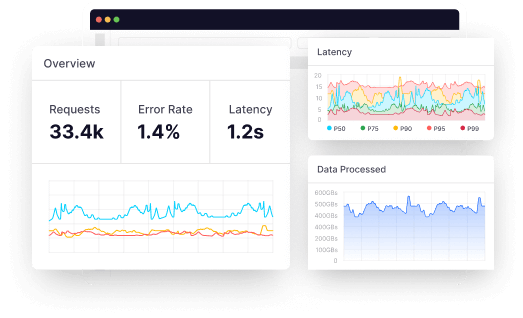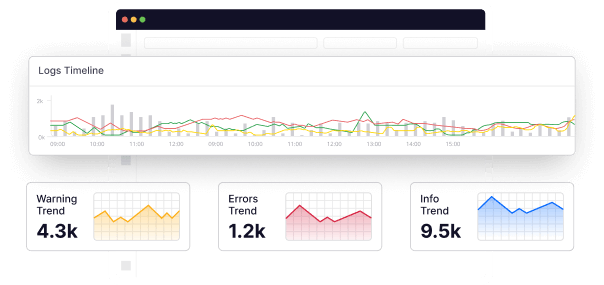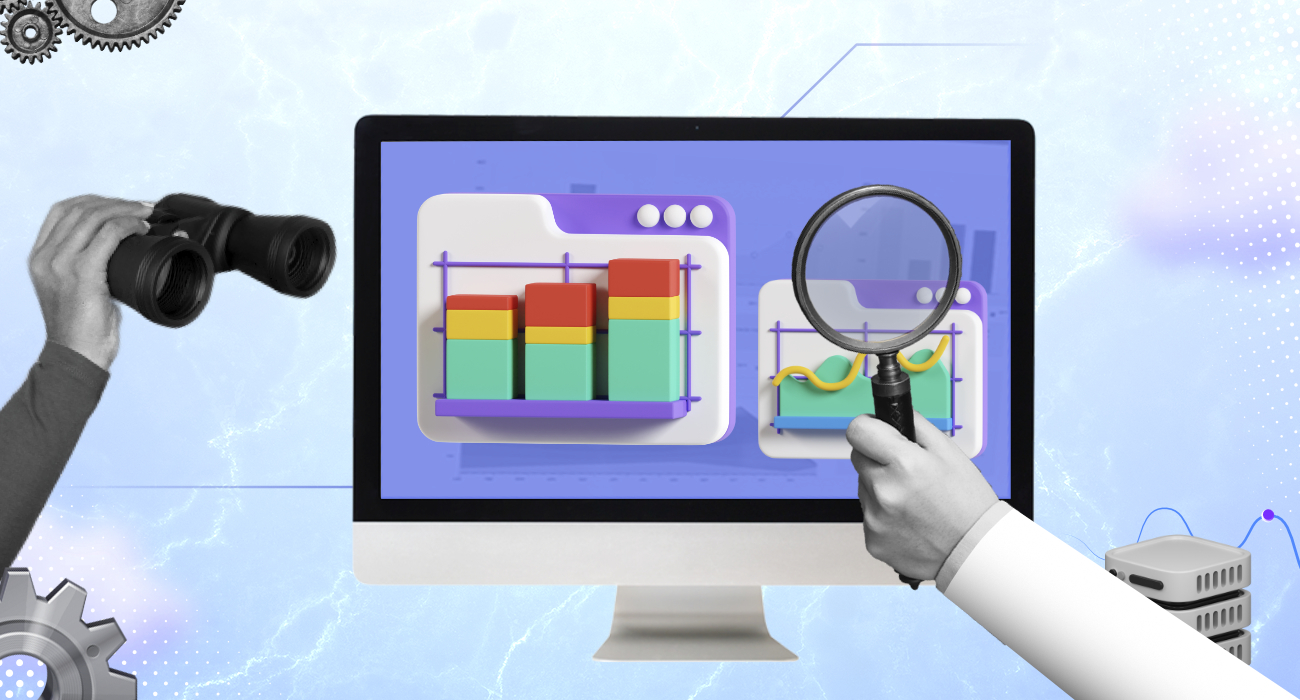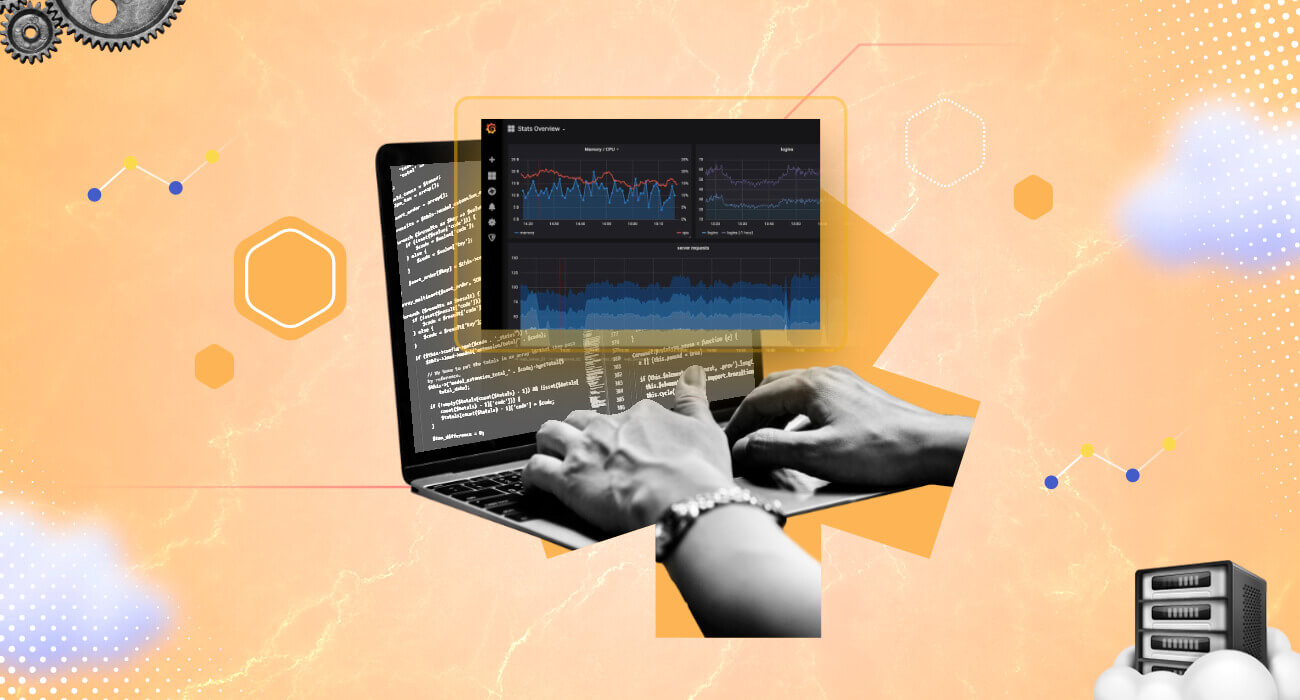DevOps is the next step in agile methodology evolution. A cultural shift that brings together development and operations teams. DevOps is a practice that entails a cultural shift, new management principles, and technological tools that aid in the implementation of best practices.
When it comes to a DevOps toolchain, businesses should look for DevOps tools that improve collaboration, reduce context switching, introduce automation, and leverage observability and monitoring to ship better software faster.
A DevOps toolchain can take one of two approaches: all-in-one or open toolchain. An all-in-one DevOps solution offers a complete solution that does not typically integrate with other third-party tools. With different tools, an open toolchain can be customized for the needs of a team.
The widespread adoption of the open toolchain approach is one of the reasons why 83% of IT decision-makers reported implementing DevOps practices to unlock higher business value.
Here in this article, we have segmented the top DevOps tools based on the key phases of a DevOps development lifecycle:
What is DevOps?
DevOps is a set of practices that combines software development (Dev) and IT operations (Ops). DevOps aims to shorten the systems development life cycle and provide continuous delivery with high software quality.
DevOps aims to establish a culture and environment where building, testing, and releasing software can happen rapidly, frequently, and more reliably. DevOps practices include agile planning, continuous delivery, and monitoring of applications. DevOps aims to improve collaboration between development and operations teams and automate the process of software delivery and infrastructure changes.
What exactly is the DevOps lifecycle?
The DevOps lifecycle is a set of automated development processes or workflows that occur as part of an iterative development lifecycle. It takes a continuous approach, so an infinity loop represents its lifecycle.
This loop represents the collaborative and iterative approach used throughout the application lifecycle, with tools and technology stacks assigned to each stage. The left section is concerned with software development and testing. In contrast, the deployment and operations cycle is represented on the right side of the infinity loop.
DevOps lifecycle phases
The DevOps lifecycle typically includes several phases: planning and development, continuous integration and testing, and deployment and monitoring.
1. Continuous development and Continuous Integration
Continuous integration (CI) is the method of automating the integration of code changes from various contributors into a single software project. Continuous delivery (CD) produces software that can be deployed readily/continuously as required. CI/CD tools help create pipelines to standardize the releases.
Here are the top three continuous integration/continuous delivery tools:
1. Jenkins
Jenkins is an open-source continuous integration and delivery platform used to automate the end-end release management lifecycle. By interacting with a wide range of testing and deployment tools, Jenkins enables Developers to continuously deliver their software.
Jenkins is one of the essential DevOps tools because of its features:
- It is a platform-agnostic, self-contained Java-based program that’s easy to install & run because of its packages for Windows, Mac OS, and Unix-like OSs.
- It is an open-source tool that’s backed by heavy community support.
- Offers multiple integrations.
2. AWS CodePipeline
Yes, we know AWS is not a popular name in the CI/CD tools list, but we have still included it because of its robust applications & use cases. CI/CD pipeline can be built using AWS CodePipeline and it utilizes a continuous delivery service module that models, visualizes, and automates all the steps required for a software release.
Features that make AWS CodePipeline a good CI/CD tool:
- The tool offers highly customized workflow modeling.
- You can integrate your own custom plugins in the system.
- AWS CodePipeline allows you to create notifications for events impacting your pipelines & receive notifications/alerts in case of a failure/issue.
3. CircleCI

CircleCI is a continuous integration and delivery platform that enables development teams to automate the build, test, and deployment processes and release code more quickly. The tool can be set up to efficiently run extremely complex pipelines using caching, docker layer caching, resource classes, and many other features.
Some of its key features are:
- It allows auto-canceling for redundant builds on the GitHub.
- The tool uses parallelism, which reduces your overall build time.
- Offers role-based access to users, Admins, non-admins, etc.
- Automated testing tools
- Automated testing is a software testing technique that executes a test case suite using specialized automated testing software tools. It double-checks software to make sure it does exactly what it was designed to do.
2) Continuous testing
The testing phase of the DevOps lifecycle follows, in which the developed code is tested for bugs and errors that may have made their way into the code. This is where quality analysis (QA) comes into play to ensure that the developed software is usable. The QA process must be completed successfully in order to determine whether the software meets the client’s specifications.
Continuous testing is accomplished through automation tools such as JUnit, Selenium, and TestNG, which allow the QA team to analyze multiple code bases simultaneously. This ensures that the developed software has no flaws in its functionality.
Here are the three best automated testing tools:
1. LambdaTest

LambdaTest is a cloud-based automation testing & test orchestration platform that simplifies and enhances continuous testing for web applications. It offers a range of features that empower developers and testers to ensure optimal functionality and compatibility across various browsers and devices.
It supports a range of automated frameworks like Selenium, Cypress, Playwright, and Appium, among others.
Some of its key features are:
- Cross-browser and Cross-platform testing
- Parallel testing
- LambdaTest offers seamless collaboration features, allowing team members to share test results, collaborate on bug fixes, and streamline debugging.
2. Snyk
Snyk is an open-source security platform that Integrates directly into development tools, workflows, and automation pipelines and checks to find out vulnerabilities in the source code of an application.
Some of its key features are:
- It provides real-time analytics of issues/bugs in your system.
- Multi-language scanning capabilities.
- Deployment management features allow you to validate the changes before they are pushed to production environments.
3. Mend (formerly WhiteSource)
Mend (formerly WhiteSource) easily secures what developers create. The tool frees development teams from the burden of application security, enabling them to produce high-quality, secure codes more quickly.
Some of its key features are:
- Automated remediation feature creates pull requests so that developers can update their custom code to fix security problems.
- Supports 27 programming languages and frameworks.
- Robust Integration capabilities.
3) Continuous monitoring
A software product’s performance must be monitored to determine the overall efficacy of the product output. This phase handles critical information about the developed app. Continuous monitoring allows developers to identify general patterns and grey areas in the app that require more effort.
Continuous monitoring is a phase of operation in which the goal is to improve the overall efficiency of the software application. Furthermore, it monitors the app’s performance. As a result, it is one of the most important stages of the DevOps lifecycle.
During the continuous monitoring phase, various system errors such as server not reachable,’ ‘low memory,’ and so on are resolved. It also ensures the services’ availability and security. When network issues and other problems are detected, they are automatically resolved during this phase.
The operations team monitors user activities for inappropriate behavior using tools such as Middleware, Datadog, and Dynatrace. As a result, developers can proactively check the system’s overall health during continuous monitoring.
Proactive testing improves system reliability and productivity while also lowering maintenance costs. Furthermore, critical and major issues are immediately reported to the development team for correction in the early stages. As a result, issues are resolved more quickly.
Infrastructure and server performance monitoring tools
Infrastructure monitoring is the process of collecting and analyzing data about a system or application. Server monitoring is the process of gaining visibility into the activities on the servers, both physical and virtual.
Infrastructure monitoring tools help you track the performance of your application at the broader level. Server monitoring tools focus just on the server part of an application.
Here are the three best Infrastructure monitoring & server performance monitoring tools
1. Middleware
Middleware is a cloud-native observability platform that also supports Infrastructure monitoring. The tool provides the DevOps team with real-time visibility into on-premises and cloud deployments. It also allows teams to view the overall health status of their infrastructure by monitoring applications, processes, servers, containers, events, databases, and more.
The tool also has container infrastructure monitoring capabilities that allow you to monitor your Kubernetes or Docker applications, making it a full-stack Infrastructure monitoring tool.
Features that make Middleware one of the best DevOps tools:
- The tool lets you gather metrics from multiple sources in one unified dashboard.
- Supports Kubernetes, Docker and microservice infrastructure monitoring.
- Scalable and cloud-native solution.
2. Datadog
Datadog is an observability platform for cloud-scale applications that provides server monitoring, database monitoring, IT monitoring and various other services through its SaaS-based platform. It supports Windows, Linux, and Mac OS.
Some of its key features are:
- The tool provides a Host map that allows you to visualize all your hosts on one screen.
- Provides real-time monitoring.
- A decade-old platform that offers robust integration with almost all DevOps tools.
3. Dynatrace
Dynatrace is a monitoring platform that simplifies enterprise cloud complexity with observability, AIOps, and application security—all in one platform. This Infrastructure monitoring tool is fast and reliable and used by a wide range of industries.
Some of its key features are:
- The tool integrates with all major cloud providers and supports almost all technology
- Uses AI to predict and resolve issues before they impact the users.
- It offers Server-side service monitoring, as well as network, process, and host monitoring.
Incident Alert Management Solution
An incident alert management solution is a platform that aggregates high-priority alerts from tech stacks across cybersecurity, ticketing, monitoring and observability to deliver IT incidents to the right on-call engineer, no matter where they are.
The rationale behind deploying an alerting platform is to elevate critical notifications beyond the cluttered communication channels of emails. When high-priority incidents occur, such as the breakdown of a core product feature, the incident notification is delivered as a persistent, critical alert to the on-call DevOps engineer’s phone with complete context. The alerts are loud and distinguishable and immediately catch the engineer’s attention.
Here are the three best Incident alert management tools
1. Onpage
OnPage is an Incident alerting tool that mobilizes code owners when critical codes fail by delivering incident notifications as persistent, distinguishable alerts, empowering them to improve their incident response times and accelerate software delivery. Their alerts can bypass the silent switch on all smartphones, and for extra redundancy, alerts can also be sent by SMS, email, and/or phone call.
Some of its key features are:
- Bi-directional integration with popular monitoring and ticketing tools.
- The ability to send high-priority alerts indicating urgent issues, and low-priority alerts for regular communication.
- On-call management with the ability to escalate alerts when the first on-call developer is unavailable.
2. Middleware
Middleware, as we mentioned above is a full-stack observability platform, and of its key features is alerts and Incident management. The tool offers an AI-powered alert system that helps developers identify & respond to critical issues at the moment they occur, improving your MTTD & MTTR.
Some of its key features are:
- The team uses machine learning & tags to quickly identify issues before they become errors.
- Role based assignments.
- Open-source and community lead tool with active community support.
3. Better Uptime

Better Uptime is an incident management tool by Betterstack that allows businesses to monitor websites, manage incidents, and share system status via status pages with customers.
It can be used to log incidents on an audit timeline and interact with team members to solve downtime or incidents with much speed.
They can send alerts about critical events across teams by phone calls, SMS, emails, Microsoft Teams, Slack, and push notifications.
Some of its key features include:
- It has a simple and straightforward interface but gives you a wide range of functionality
- The On-call schedule calendar alerts the right people at the right time and configures on-call duty rotations.
- It allows easy integration with third-party systems like New Relic, Grafana, and others.”
4. Continuous deployment
Continuous deployment (CD) ensures easy product deployment without compromising application performance. During this phase, ensuring that the code is precisely deployed on all available servers is critical. This process eliminates the need for scheduled releases while also speeding up the feedback mechanism, allowing developers to address issues more quickly and accurately.
Through configuration management, containerization tools aid in continuous deployment.
A container platform is a software that creates, manages and secures containerized applications. Container management tools enable easier & faster networking and container orchestration.
Container management tools
Container management platforms handle a number of containerized application processes, such as; Governance, automation, extensibility, security and support. Here are the three top container management tools:
1. Docker
Docker is an open platform that uses OS-level virtualization for developing, shipping, and running applications in packages called containers. A docker image is a standalone, executable package that contains all the components required to run a program.
Some of the key features that make it a good DevOps tool:
- Developers collaborate, test, and build using Docker.
- Distributed applications can be packaged, run, and managed using Docker App.
- Docker Hub offers millions of images that come from trusted publishers and the community.
- Standardized Packaging format that runs on a variety of Linux and Windows Server operating systems.
2. Kubernetes
Kubernetes (also called k8s or “kube”) is an open-source container orchestration platform that automates a lot of the manual processes in setting up, running, and scaling containerized systems. K8s is one of the most popular container management tools in the DevOps community.
Features that set it apart from other DevOps Tools are:
- The tool offers automated rollouts & rollbacks.
- Automatically adjust the resource utilization of containerized apps.
- K8s uses a declarative model that allows it to maintain the defined state and recover from any failures.
3. OpenShift
OpenShift (by Red Hat) is an open-source, cloud-based Kubernetes management platform that helps developers build applications at scale. It provides automatic installation, upgrades, and life cycle management for the operating system, Kubernetes and cluster services, and applications throughout the container stack.
Some of its key features are:
- Apps running on OpenShift can scale to hundreds and thousands of instances across thousand of nods per second.
- The tool follows the open-source standards set by the Open Container Initiative (OCI) and Cloud Native Computing Foundation (CNCF).
- It allows automated installation and upgrades across all popular cloud and on-premise stacks.
Infrastructure as code tools
Infrastructure as code, or IaC, is an IT methodology that controls and codifies the underlying software-based IT infrastructure. Instead of manually configuring individual hardware devices and OSs, IaC enables development or operations teams to automatically manage, monitor, and provision resources.
Infrastructure as code tools help configure and automate the provisioning of the underlying infrastructure. Here are the three best Infrastructure as code tools:
1. Terraform
Terraform is an open-source, Infrastructure as a Code tool that helps Devs build, alter, and enhance their infrastructure without manually provisioning or managing it. With Terraform, you can manage AWS, Azure, Google Cloud, Kubernetes, OpenStack, and other popular Infrastructure providers.
Features that set Terraform apart from other DevOps Tools are:
- Terraform lets you create a blueprint of your Infrastructure in the form of a template that can be versioned, shared, and re-used.
- It can implement complex changes to your infrastructure with almost no human interaction.
- Open-source, highly scalable, and fairly priced tool that offers almost all paid features to small teams for free.
2. Puppet
Puppet is a system management tool that centralizes and automates configuration management. This open-source configuration management software is commonly used for server configuration, management, deployment, and orchestration throughout the whole infrastructure for a variety of applications and services.
Some of its key features are:
- Puppet offers Idempotency which means one can safely run the same set of configurations multiple times on the same machine and get the same results.
- Puppet can be integrated with Git (version control tool) to store puppets code helping your team gain the benefits of both DevOps and agile methodology.
- Using Resource Abstraction Layer (RAL), coordinating the specified framework design is possible without worrying about the execution’s subtleties or how the arrangement order will work within the framework.
3. Progress Chef
Progress Chef (formerly Chef) is a robust Infrastructure management automation tool that ensures that configurations are applied consistently in every environment. This tool allows DevOps teams to define and implement safe and scalable infrastructure automation across any cloud, virtual machine, and/or physical infrastructure.
Some of its key features are:
- The tool can run in a client/server mode or in a standalone configuration mode named “chef-solo.”
- The self-service tool allows agile delivery teams to provision and deploy infrastructure on-demand without any dependencies.
- Wide range of third-party integrations.
5. Continuous feedback
Continuous feedback is required to determine and analyse the application’s final outcome. It establishes the tone for improving the current version and releasing a new version based on feedback from stakeholders.
Only by analysing the results of software operations can the overall process of app development be improved. Feedback is simply information obtained from the client’s end. Information is important in this context because it contains all of the data about the software’s performance and related issues. It also includes suggestions made by software users.
6. Continuous operations
The final stage of the DevOps lifecycle is the shortest and most straightforward. Continuity is at the heart of all DevOps operations, allowing developers to automate release processes, detect issues quickly, and build better versions of software products. Continuity is essential for removing distractions and other extra steps that impede development.
Continuous operations have shorter development cycles, allowing organizations to advertise constantly and reduce the overall time to market the product. DevOps increases the worth of software products by making them better and more efficient, attracting new customers.
How to choose the right devops tools?
If you’re thinking about DevOps tools for your company, you want to make sure you pick the right one.
DevOps software is a rapidly expanding market, and while it can be difficult to know which tools you truly require, researching all of your options and making the right choice does not have to be a difficult task.
Here are some pointers to help you select the best DevOps tools:
1) Develop a common tools strategy-
To begin, you must understand your organization’s Dev, QA, and infrastructure automation teams’ collaboration and shared tools strategy. A good strategy allows DevOps teams to collaborate on development, testing, and deployment. Processes, communications and collaboration planning, continuous development tools, continuous integration tools, continuous testing tools, continuous deployment tools, and continuous operations and CloudOps tools should all be included in the strategy.
It is critical that the strategy be one on which everyone can agree and that it reflects your DevOps business objectives. To avoid miscommunication among teams, the DevOps tools strategy should adhere to a common set of objectives while providing seamless collaboration and integration between tools. It is critical to remember that the goal is to automate everything. In other words, developers should be able to send new and modified software to deployment and operations without human intervention.
2) Make sure DevOps tooling captures every request-
There should be no changes or ad hoc work outside of the DevOps process, and DevOps tooling should capture every request for new or changed software. To be clear, this is not the same as logging software progress as it moves through the processes. DevOps enables the automated acceptance of change requests received from other parts of the DevOps team or from the business.
3) Log metrics-
Select a tool that will assist your organisation in tracking metrics for both manual and automated processes. You must ensure that the tool you choose will provide you with a thorough understanding of the productivity of your DevOps processes, allowing you to determine whether or not they are working in your favour.
The tools should allow you to define which metrics are relevant to DevOps processes, such as deployment speed versus testing errors discovered. It is also critical that the tools allow you to define automated processes for problem resolution that do not require human intervention.
Conclusion
We hope this DevOps tools list would help you accelerate your DevOps journey. We at Middleware firmly believe that the open toolchain approach is the best approach because it allows the primary DevOps tool to be customized with third-party tools according to the organization’s unique needs.
That’s why our cloud-native observability platform has 50+ integrations that allow you to create custom workflows and unified dashboards as per your business-specific requirements.
Sign up to see this cloud-native DevOps tool in action!
FAQs
What are DevOps tools?
DevOps tools are a set of tools that helps organizations effectively adopt the DevOps methodology across the multiple phases of the software development lifecycle
Which are the best DevOps tools?
Here is a list of the best DevOps tools:
- Middleware
- Datadog
- Jenkins
- Snyk
- Xray
- Terraform
- Puppet
- Docker
- K8s
How to choose the best DevOps tools?
You should consider the following factors while choosing the best DevOps tools:
- Price
- Support for CI/CD
- Integration with other tools
- API support
- Cross-platform support
- Customization capabilities
- Monitoring and analytics features
- Cloud-native
- Customer support
![12+ Devops Tools To Look For in 2024[Updated]](https://middleware.io/wp-content/uploads/2021/10/DevOps-tools-2.jpg)







